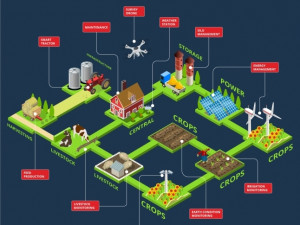Johannesburg, 20 Apr 2017
Using the Internet of things (IOT) technology can push the efficiency of farming to completely new levels, as the food demands of a growing global population puts increasing pressure on agriculture around the world.
According to a report by Business Insider, published at the end of last year, the world will need to produce 70% more food in 2050 than it did in 2006 in order to feed the growing population of the earth, based on numbers produced by the UN Food and Agriculture Organization.
Andr'e Strauss, Director of Partnerships at IoT.nxt, highlights five key areas where the use of IOT can dramatically improve efficiencies and reduce costs:
* Digitisation of the value and supply chains allows for produce to be tracked and traced from source to retail shelf, delivering quality control and the ability to immediately identify problem areas at production source.
* By connecting all legacy machinery, warehousing/packaging plants can be more productive and efficient. Farm managers can, for instance, assess how many packers, machines and delivery trucks will be required on any given day.
* Energy management, a significant cost at large-scale farming operations. Use of power, management of irrigation, pumps, dam levels, and water required at production plants are all aspects of energy use that can be managed in real-time and changed seamlessly for exceptional cost savings and improved efficiency.
* Tracking of livestock, which, among other things, will allow for management of the health of the livestock.
* Management of fuel, another variable cost that has a direct impact on the cash flow of any farm. Using a digitised, connected management system allows for exact planning of fuel supply required for times of peak and reduced levels of activity.
BI Intelligence, Business Insider's research service, predicts IOT device installations in the agriculture world will increase from 30 million in 2015 to 75 million in 2020, for a compound annual growth rate of 20%.
According to the BI report, the value of using IOT smart agriculture is evident in numbers available for the current leader of using IOT in farming, the United States, where 7 340kg of cereal (eg, wheat, rice, maize, barley, etc) is produced per hectare (2.5 acres) of farmland, compared to the global average of 3 851kg of cereal per hectare.

Share